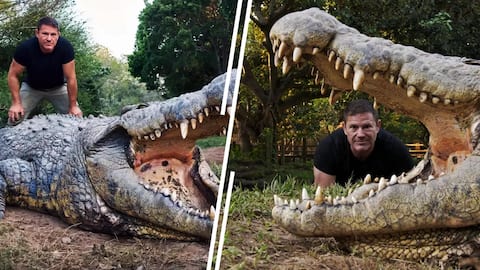Meet Henry, the 123-year-old crocodile with a large family
What's the story
Henry, a 16-foot crocodile hailing from Botswana, is recognized as the world's oldest of his kind. In the early 1900s, he was notorious for preying on human children and hunting meek prey such as zebras and porcupines. Currently residing in Scottburgh, South Africa for over three decades, Henry has gained fame for having six "wives" and fathering more than 10,000 offspring according to his zookeepers.
Giant croc
Henry: A record-breaking reptile of remarkable size
At 123 years old, Henry holds the title of the oldest living crocodile and reptile in the world. Weighing in at a hefty 700 kg, he measures an impressive 16 feet long, roughly equivalent to the size of a minibus. This colossal creature belongs to the Nile crocodile species, found across Sub-Saharan Africa in approximately 26 countries. Known for their lethal nature, Nile crocodiles are responsible for numerous human fatalities in this region.
Crocodile's tale
Henry's journey: From Botswana to South Africa
Henry was born on December 16, 1900, in the Okavango Delta, Botswana, a UNESCO World Heritage Site. His early life was marked by a notorious reputation due to his predatory behavior. Now residing in captivity in Scottburgh, South Africa for the past three decades, Henry is recognized for his fearsome fang-like teeth and enormous size. Despite his dark past, he has become an iconic figure at the zoo where he resides.
Captivity
The capture of Henry: A hunter's tale
In an attempt to end Henry's reign of terror, local tribes sought the assistance of renowned hunter Sir Henry Neumann. Instead of killing the beast, Neumann chose to capture him, sentencing him to a lifetime in captivity. The giant crocodile was named Henry in honor of this renowned hunter. This marked a significant turning point in his life, transitioning from feared predator to captive attraction.
Zoo life
Henry's new life at Crocworld Conservation Centre
For the past three decades, Henry has been living at the Crocworld Conservation Centre in Scottburgh. His enormous size and age continue to awe visitors who admire him from a safe distance. The contrast between his dark, man-eating past and his present role as a zoo attraction is striking. Despite his history, he has become an admired figure within the confines of his enclosure.
